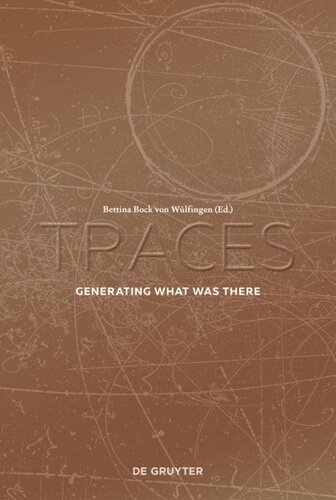

Most ebook files are in PDF format, so you can easily read them using various software such as Foxit Reader or directly on the Google Chrome browser.
Some ebook files are released by publishers in other formats such as .awz, .mobi, .epub, .fb2, etc. You may need to install specific software to read these formats on mobile/PC, such as Calibre.
Please read the tutorial at this link: https://ebookbell.com/faq
We offer FREE conversion to the popular formats you request; however, this may take some time. Therefore, right after payment, please email us, and we will try to provide the service as quickly as possible.
For some exceptional file formats or broken links (if any), please refrain from opening any disputes. Instead, email us first, and we will try to assist within a maximum of 6 hours.
EbookBell Team

4.3
58 reviewsTraces keep time and make the past visible. As such, they continue to be a fundamental resource for scientific knowledge production in modernity. While the art of trace reading is a millennia-old practice, tracings are specifically produced in the photographic archive or in the scientific laboratory. The material traces of the forms represent the objects and causes to which they owe their existence while making them invisible at the moment of their visualization. By looking at different techniques for the production of traces and their changes over two centuries, the contributions show the continuities they have, both in the laboratories and in large colliders of particle physics. This volume, inspired by Carlo Ginzburg’s early works, formulates a theory of traces for the 21st century.
Trace production in the sciences
Discusses continuities and differences introduced by digital techniques for the purpose of providing scientific proof, using case studies of two centuries
Over 20 exemplary images